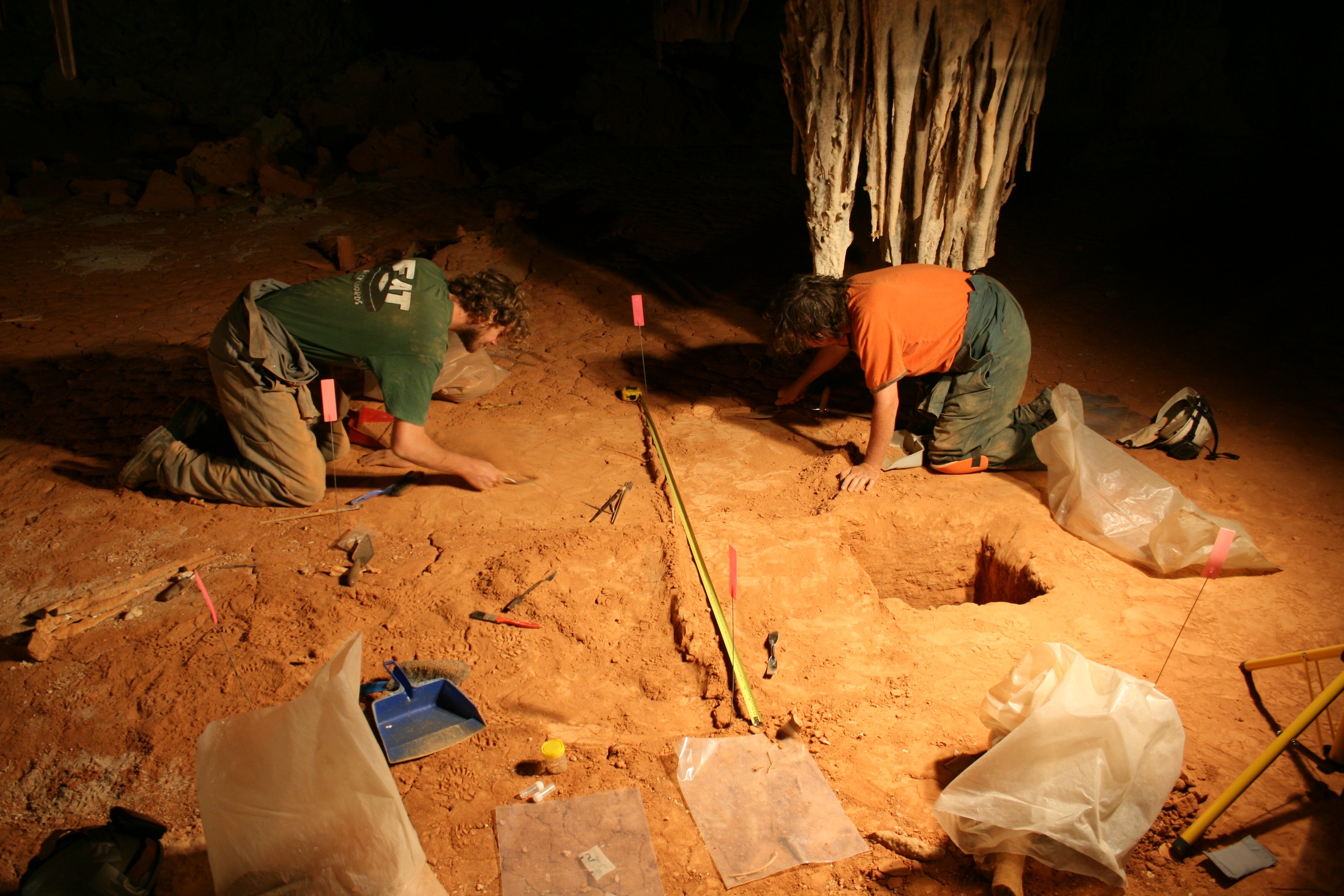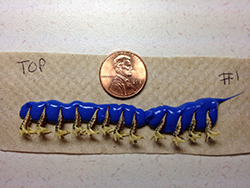Dental Microwear of the Hadza: Implications for the evolution of human diet
Team Members: Sarah V. Livengood, Alyssa Crittenden (University of Nevada- Las Vegas), Peter S. Ungar
Funding Sources: Leakey Foundation, University of Nevada- Las Vegas, Arkansas Graduate Fellowship in Anthropology, Sigma Xi
Studies of early hominin bones and teeth have led to insights about the diets of our ancestors. Recent dental microwear texture analyses have been especially effective at distinguishing between hominins in ways that separate living primates with differing diets. Analogy with living human foragers and nonhuman primates has also contributed to inferences of early hominin diets by providing important models. Observations that hunter-gatherers living in savanna settings rely on meat and underground storage organs (USOs) have led to the idea that one or the other might be a critical keystone resource associated with the emergence of the genus Homo.
There has been a disconnect between researchers studying hominin teeth and those who model diet among modern hunter-gatherers. To date, no research has tested whether meat or USO consumption by human foragers leaves identifiable differences in dental microwear or whether the resulting patterns can be matched with actual microwear on early hominin teeth. This dental microwear analysis of a living hunter- gatherer group, the Hadza of Northern Tanzania, will augment our comparative database of microwear textures with a living traditional foraging group, and document unprecedented detail relating diet to pattern, and it will use seasonal variation in Hadza diet to test the hypothesis that hunter-gatherer diets dominated by USOs and vertebrate meat result in significantly different microwear patterns. By comparing the resulting patterns with those already collected and published for early hominins, particularly early Homo, we can determine whether these patterns increase our understanding of the roles that meat and USOs played in evolution of human diet. This study further develops tools to provide insights into the effects of diet on the evolution of our ancestors.
SSFA Development and Instrumentation Comparisons
Team Members: Peter S. Ungar, Sam Arman, Chris Brown, Anna Ragni
We are continuing to develop new protocols for dental microwear texture analysis, and updating instrumentation to take advantage of new technologies.
Australian Marsupial Research
Team Members: Sam Arman, Gavin Prideaux, Grant Gully
Funding Sources: Australian Research Council, Flinders University
Our laboratory is collaborating with Gavin Prideaux (Flinders University) and his staff and students to use microwear to help better understand the evolution of marsupial herbivores in Australia, including macropodine (long faced) kangaroos, sthenurine (short-faced extinct) kangaroos, Diprotodontids (quadrupedal marsupials including the largest marsupials ever), and others. This will also include consideration of the evolution of Australian plants, and the role that Australian biogeography has played in shaping herbivore evolution. This project incorporates dental microwear, mesowear, tooth morphology, stable isotope analysis and enamel thickness methodologies.
Non-human Primate (Brazil Project)
Team Members: Lucas Delezene, Mark Teaford, Almudena Estalrrich Albo, Carrie Healy, Alexa Wimberly, Claire Hartgrove, Peter S. Ungar
Funding Source:
The Brazil project has multiple lines of research investigating diet of New World Monkeys through dental microwear textural analysis and dental topographic analysis.
One such avenue looks at the relationship between dental microwear and dental topography in Sapajus apella. This project is analyzing the variables of dental microwear texture analysis and the variables of dental topographic analysis for Sapajus apella. While numerous studies have determined the relationship between dental microwear texture analysis and diet, as well as between dental topographic analysis and diet, few have compared these two analyses. This study seeks to identify if there are correlations between these two analyses, and how these correlations may affect the outcome.
The Rodent Project
Team Members: Salvatore Caporale, Charles Withnel, Jenny Burgman, Mikiko Joiner, Peter Ungar
Funding Source: National Science Foundation
Our laboratory is studying rodents as paleoenvironmental proxies. Rodents and other micromammals are ubiquitous at many fossils sites. Because they tend to live in specific habitats and eat foods available to them in those habitats, we can infer aspects of the environments they inhabit if we can learn something about their diets.
This project has several elements, including the study of the teeth of extant rodents from roosts found in different microhabitats within the Cradle of Humankind in South Africa, and those of fossil rodents from early hominin sites such as Swartkrans, Sterkfontein, and Gladysvale. Association of microwear (and isotope) patterns with diet (and habitat) in living rodents is key to using these lines of evidence to help infer diet (and habitat) from fossil teeth. And since fossil rodents are found in the same deposits as early hominins, micromammal microwear can serve as a useful proxy for the environments in which our ancestors lived.
Our incisor microwear project is using the confocal profiler to collect microwear texture data on front teeth with a 100x objective. But rodent molars are too small and the enamel is too thin to use this instrument to study microwear on cheek teeth. Jenny Burgman and Mikiko Joiner are developing a new protocol for 3D measurement of very tiny microwear surfaces using our newest confocal profiler and 150x objective.


